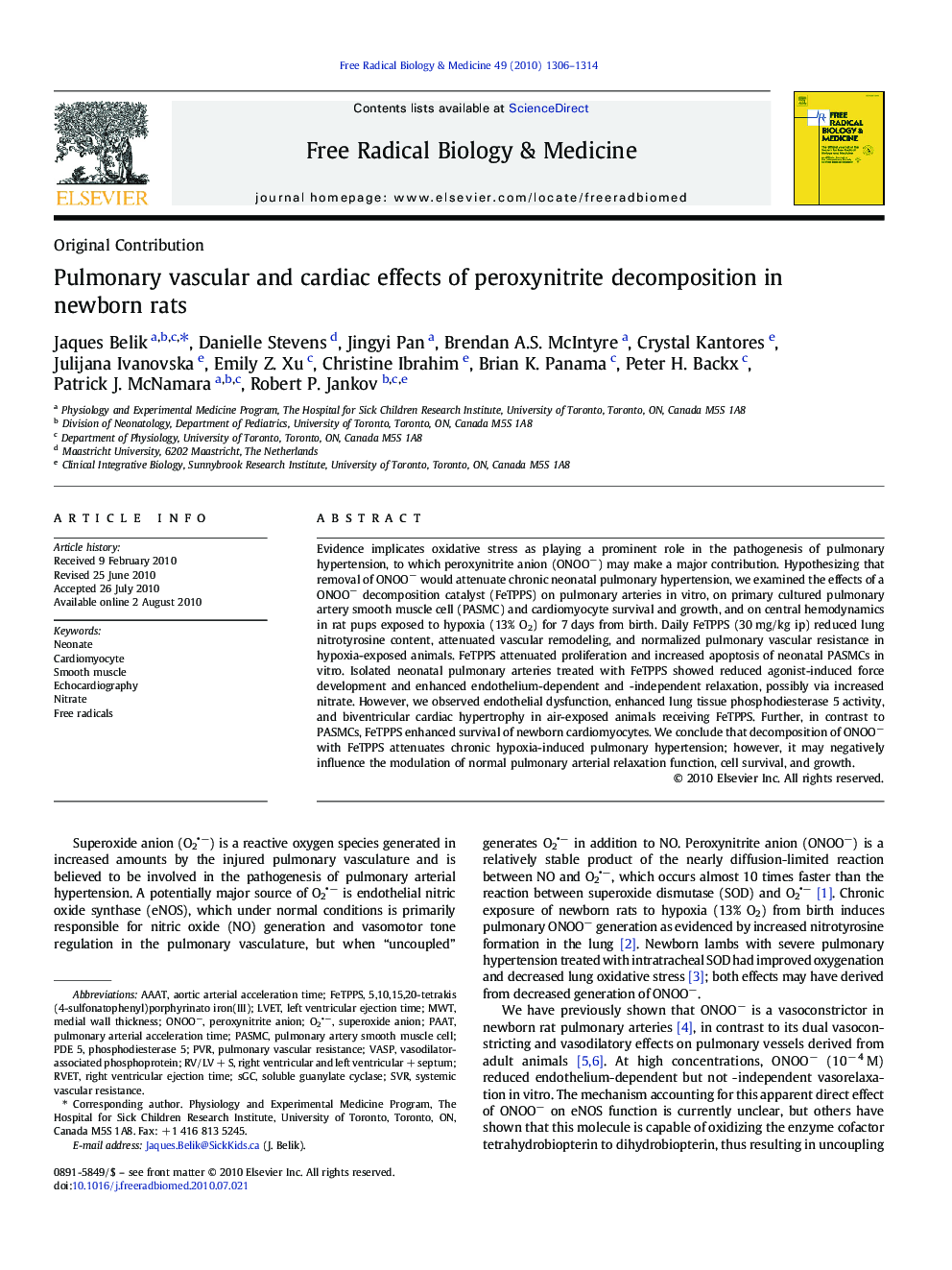| Article ID | Journal | Published Year | Pages | File Type |
|---|---|---|---|---|
| 1909602 | Free Radical Biology and Medicine | 2010 | 9 Pages |
Evidence implicates oxidative stress as playing a prominent role in the pathogenesis of pulmonary hypertension, to which peroxynitrite anion (ONOO−) may make a major contribution. Hypothesizing that removal of ONOO− would attenuate chronic neonatal pulmonary hypertension, we examined the effects of a ONOO− decomposition catalyst (FeTPPS) on pulmonary arteries in vitro, on primary cultured pulmonary artery smooth muscle cell (PASMC) and cardiomyocyte survival and growth, and on central hemodynamics in rat pups exposed to hypoxia (13% O2) for 7 days from birth. Daily FeTPPS (30 mg/kg ip) reduced lung nitrotyrosine content, attenuated vascular remodeling, and normalized pulmonary vascular resistance in hypoxia-exposed animals. FeTPPS attenuated proliferation and increased apoptosis of neonatal PASMCs in vitro. Isolated neonatal pulmonary arteries treated with FeTPPS showed reduced agonist-induced force development and enhanced endothelium-dependent and -independent relaxation, possibly via increased nitrate. However, we observed endothelial dysfunction, enhanced lung tissue phosphodiesterase 5 activity, and biventricular cardiac hypertrophy in air-exposed animals receiving FeTPPS. Further, in contrast to PASMCs, FeTPPS enhanced survival of newborn cardiomyocytes. We conclude that decomposition of ONOO− with FeTPPS attenuates chronic hypoxia-induced pulmonary hypertension; however, it may negatively influence the modulation of normal pulmonary arterial relaxation function, cell survival, and growth.
